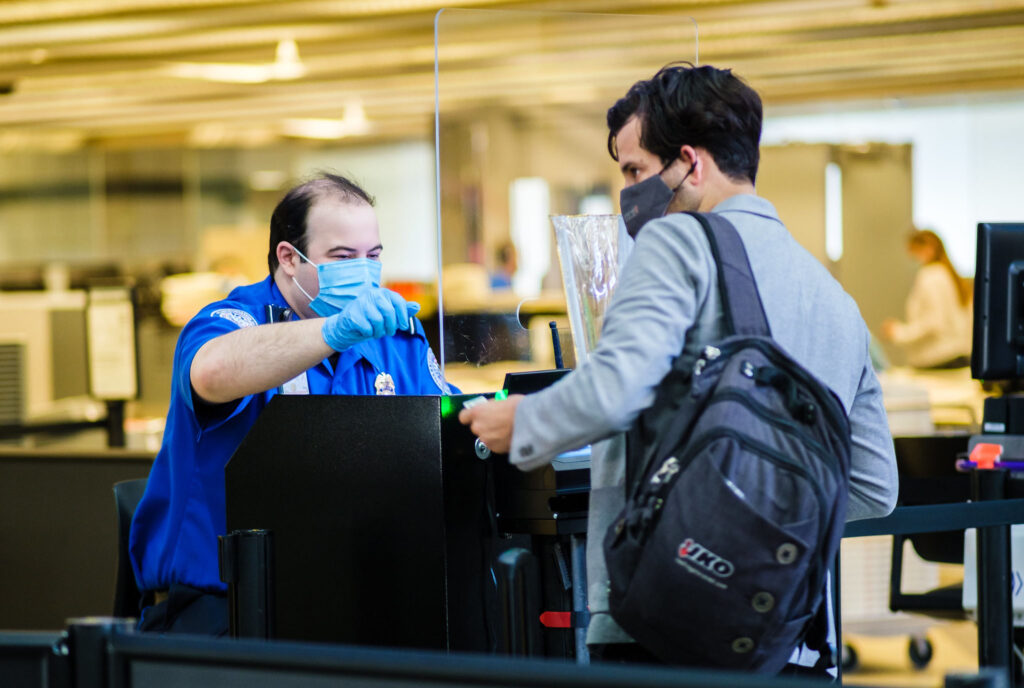Passengers Ready to Board, But When?
Survey: About half of North American travelers say they may fly in next 3 months
By Jeff Martinelli
Published November 23, 2020
Read Time: 3 mins
Travelers are eager to fly again. They’re just not sure when.
Those are some of the conclusions from a recent survey of 4,100 travelers in 30 countries conducted by Airports Council International, an aviation industry group.
The 2020 Global Traveler Survey found that 85 percent of respondents who traveled in 2019 said they are likely to take to the skies within the next year. About 80 percent said they had a high level of confidence that airports and airlines will provide a safe environment considering the COVID-19 pandemic.
About half of the North American respondents, 53 percent, said they intended to fly again within the next three months. That’s encouraging news for the aviation industry, said Valerie St-James, director of market research for ACI World. But, she cautioned, “Intention does not always translate into behavior.”
To participate in the survey, which was conducted in August and September, respondents had to be at least 18 years old, had to have flown in 2019 and intend to fly again.
From a global perspective, the survey indicated that leisure travelers would take longer to fly again, especially if they were traveling internationally.
“Business travelers and those who must fly for personal reasons—visit family and friends, school studies, et cetera—will return sooner,” St. James said.

The 2020 Global Traveler Survey found that 85 percent of respondents who traveled in 2019 said they are likely to fly within the next year. (Photo by Beth Hollerich)
But in the U.S., it appears that trend is reversed.
“We have many more passengers flying for leisure than for business,” said Samantha Stedford, Director of Customer Experience at Pittsburgh International Airport, where overall travel is down slightly more than 60 percent.
“They are mostly flying to the Florida destinations, but in terms of returning to flying, it is pretty early. We’ll definitely be looking to see if this trend continues.”
What’s the biggest obstacle in returning to flying? Quarantine. More than three out of four people polled said they would not travel if that meant they had to self-quarantine. New York City is one of those destinations and the logistics involved make it difficult even for essential employees.
Bill Leger, of South Fayette, Pa., understands that too well. An applications manager for a hospital equipment supply company, his job has required him to fly 11 times this year to hospitals throughout the country to provide critical support. His next trip will be to New York, and he’ll have to document his travels and produce a negative COVID-19 test to avoid a quarantine.
Leger has been flying regularly since the World Health Organization declared the COVID-19 pandemic in March. But he’ll make significantly fewer than the 29 trips he took in 2019.
“Driving is the biggest change for me,” he said, “I would only drive two to four hours from my house and fly to anything farther than that last year. Now, I’m making five- to six-hour trips in my car to places like Syracuse, N.Y.; Philadelphia; and Toronto.”
Leger is comfortable with flying as long as important steps, like wearing face masks and deep cleaning of commonly used spaces, are followed. He takes extra precautions himself and says common sense is why he is willing to travel for leisure now.
“We always travel with sanitary wipes even though I know the airlines are cleaning the planes,” said Leger, who added that he and his wife were planning to visit their daughter in Seattle this year until a non-COVID-related event put the trip on hold. “We definitely would have flown. Being smart and following protocols should generally keep you safe.”
Watch
This Next
Read
This Next





